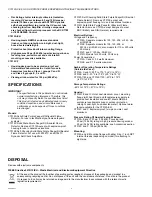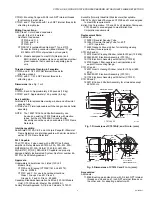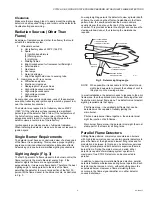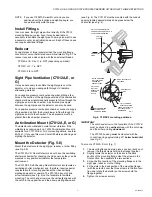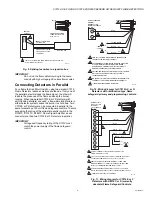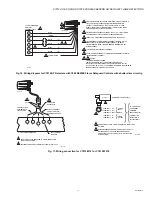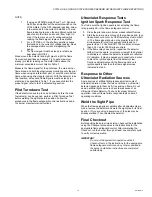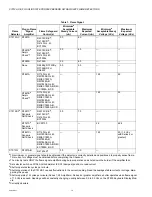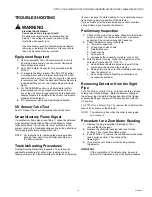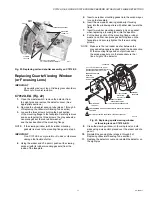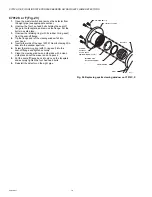
C7012A,C,E,F,G SOLID STATE PURPLE PEEPER® ULTRAVIOLET FLAME DETECTORS
15
60-2398-17
TROUBLESHOOTING
WARNING
Electrical Shock Hazard.
Can cause serious injury or death.
Be extremely careful while troubleshooting the
detector; line voltage is present on some of the
terminals when power is on.
Open the master switch to disconnect power before
removing or installing the detector or its cover. More
than one disconnect can be involved.
Equipment Required
1.
Use Honeywell W136A Volt-ohmmeter with a zero to
25 microampere scale to check out most Honeywell
flame safeguard controls.
2.
Use 196146 Meter Connector Plug provided with the
W136A.
3.
To measure the flame signal of the BCS 7700 control,
a volt-ohmmeter with a minimum sensitivity of 20,000
ohms/volt and a zero to five Vdc or zero to ten Vdc scale
is recommended. When the Keyboard Display Module is
included with the control, the module displays a flame
signal.
4.
For 7800 SERIES controls, a ohm/voltmeter with an
input impedance of one megohm/volt and a zero to
five or ten Vdc scale is suggested. When the Keyboard
Display Module is included with the control, the module
displays a flame signal.
5.
For replacement parts, see Specifications section.
UV Sensor Tube Test
See UV Sensor Tube Test in Adjustments and Checkout.
Unsatisfactory Flame Signal
If a satisfactory flame signal (see Table 1) cannot be obtained
while adjusting the sighting position of the detector, follow
these procedures. If you encounter other problems in the
system, refer to the Troubleshooting section in the instructions
for the appropriate flame safeguard control.
NOTE: For instructions for replacing the viewing window,
sensing tube, and coil and shutter assembly, see
the Service section.
Troubleshooting Procedures
First perform the Preliminary Inspection. Then follow the
applicable procedures for either a low reading or a zero
reading on the meter. After reinstalling the detector or replacing
its cover, recheck the meter reading. To try to obtain the proper
flame signal, adjust the position of the detector.
If you complete all of the procedures and cannot yet obtain
a proper flame signal, replace the detector.
Preliminary Inspection
1.
Check for the proper line voltage. Make sure the master
switch is closed, connections are correct, and power
supply is of the correct voltage and frequency.
2.
Check the detector wiring for defects:
a. Incorrect connections.
b. Wrong type or size of wire.
c. Deteriorated wire.
d. Open circuits.
e. Short circuits.
f. Leakage paths caused by moisture, soot, or dirt.
3.
With the burner running, check the temperature at the
detector. If it exceeds 175°F (79°C):
a. Add additional insulation between the wall of the
combustion chamber and the detector.
b. Add a shield or screen to reflect radiated heat away
from the detector, or
c. Add cooling (refer to Sight Pipe Ventilation and
Accessories sections).
Removing Detector from the Sight
Pipe
For C7012A,E or G (refer to Fig. 9); loosen the three screws
holding the mounting flange; rotate the detector slightly so
the screws clear the slots in the back section of the flange;
separate the flange; and pull off the back section (with the
UV sensor).
For C7012C or F (refer to Fig. 10); unscrew the collar from the
pipe union and remove the detector.
NOTE: The detector is free when the collar is unscrewed;
do not drop it.
Procedure for a Zero Meter Reading
1.
Replace the plug-in amplifier (if included). Then
recheck the flame signal.
2.
Replace the ultraviolet sensing tube (see Service
section). Then recheck the flame signal.
3.
For a C7012E or F, replace the coil and shutter assembly
(see Service section). Then recheck the
flame signal.
4.
If you still cannot obtain a meter reading, replace
the detector.
IMPORTANT
At the completion of Troubleshooting, be sure to
perform the Adjustments and Checkout procedures.


